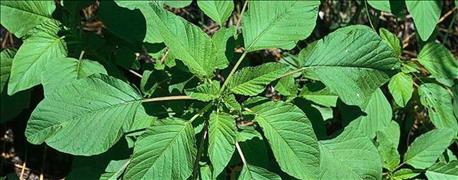July 29, 2016

Scientists with the University of Arkansas and the University of Western Australia recently conducted a three-year field experiment to determine the impact of in-crop herbicides and fall weed management practices on Palmer amaranth. Their results were published in the journal Weed Science.
Related: Palmer amaranth is most troublesome weed in U.S.
What did they compare?
Researchers compared glyphosate-only weed control with preemergence herbicides, a residual glufosinate applied postemergence, and a variety of harvest-time and post-harvest management options – used alone or in combination.
What were the harvest and post-harvest controls used?

An article published in the latest issue of the journal Weed Science shows that adopting harvest-time and post-harvest weed controls can reduce the prevalence of glyphosate-resistant Palmer amaranth.(Photo: Joseph M. DiTomaso/University of California-Davis/Bugwood.org)
The harvest-time and post-harvest controls included spreading crop residues or incorporating them into the soil, using cover crops, adopting windrowing with or without burning, and removing crop residues that contain weed seeds from the field.
What did the study show?
The study showed that three controls in particular made a significant impact on the population density of Palmer amaranth – planting cover crops, removing crop residues and incorporating crop residues into the soil. The effect of these fall controls on seed production, though, was inconsistent across the three years of the study.
Did preemergence herbicides make a difference?
When preemergence herbicides were added as part of an integrated control program, both Palmer amaranth population density and subsequent seed production were significantly reduced compared to a glyphosate-only program. The glufosinate-containing residual herbicide program also proved to be superior to the glyphosate-containing residual program in reducing Palmer amaranth seed production.
“Our study shows that farmers diversifying their weed management program can reduce both the prevalence of resistant weeds and the size of the soil seedbank, which can extend the useful life of the herbicides they rely on for weed control,” says Nicholas Korres, Ph.D., of the University of Arkansas.
Related: Palmer amaranth time lapse videos stress early control
Where do you find more information?
Full text of the article “Integrating Herbicide Programs with Harvest Weed Seed Control and Other Fall Management Practices for the Control of Glyphosate-resistant Palmer amaranth” is now available in Weed Science Vol. 64, Issue 3, July-September, 2016.
Source: Weed Science Society of America
You May Also Like




